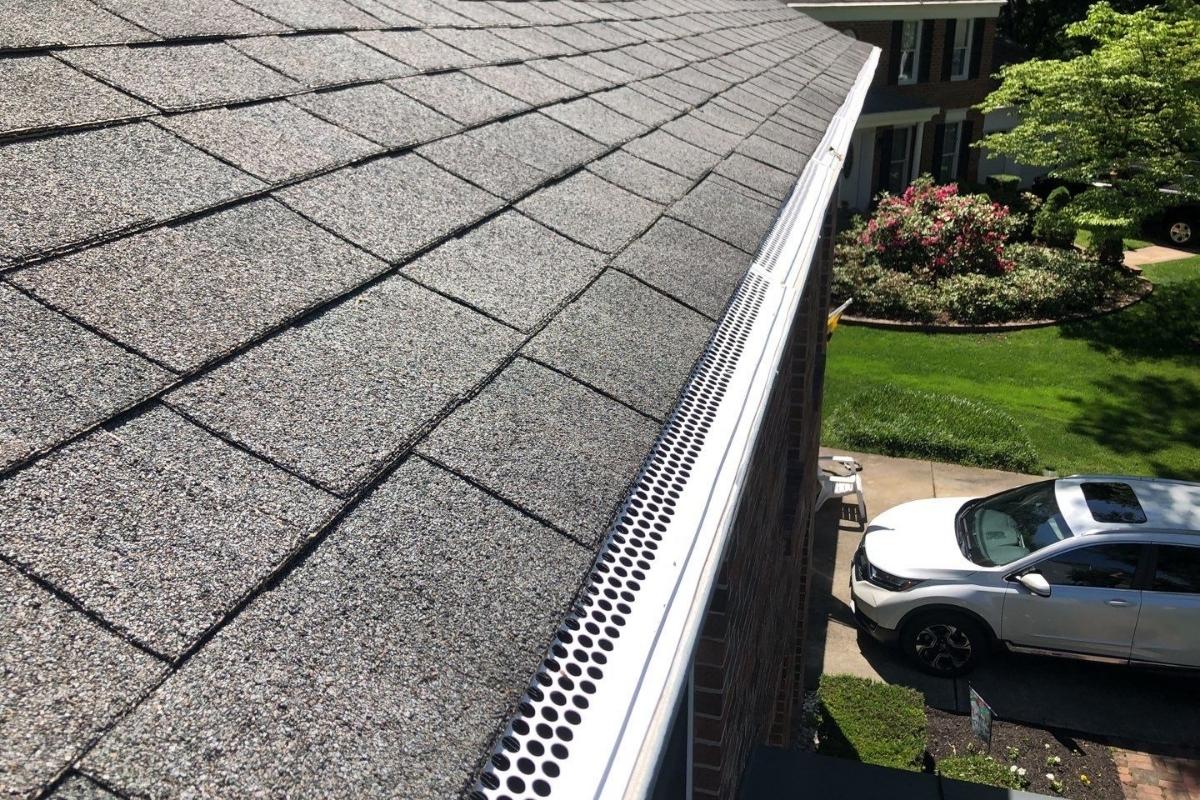Signs of Hail Damage on Roof: What Homeowners Need to Know
Ever wonder what a thunderstorm leaves behind on your rooftop?
Spotting the signs of hail damage on roof can be tricky, but it’s crucial if you want to avoid bigger headaches down the road. Think of this as your quick guide on what to look out for after hail has danced on your shingles.
Stick around, and we’ll show you how to become a hail damage detective, making sure your home stays safe and sound.
Dented or Bruised Shingles
Hail isn’t picky; it can come in any size, and even the small stuff can pack a punch on your shingles. After a storm, take a gander at your roof and look for any shingles that seem to have taken a hit. They might show dents or dark spots, which are classic signs of hail doing its number on them.
If you spot these, it means your roof has been compromised, and it’s a clear signal to consider roof repair or a closer professional inspection.
Missing Roof Granules
Granules are the little bits that cover the surface of your shingles, kind of like sprinkles on a doughnut; they’re there to protect your roof from the sun’s UV rays and improve fire resistance. When hail strikes, it can knock off these granules, leaving exposed spots. These bare areas can weaken your roof over time, as they are more vulnerable to further roof damage from weather.
It’s a good idea to check the gutters and downspouts for roof granules, too, as they often wash off during heavy rain. Losing a few granules here and there is normal, but a large amount could be a red flag.
Cracked or Split Shingles
The thing about cracked or split shingles is that they’re a definite sign your roof is asking for help. These cracks can be subtle, like a hairline, or as noticeable as a wide gap. If you see these, water can easily seep through and cause damage to the structures underneath your roof.
Split shingles are a step up from cracks, and they spell trouble for your roof’s durability. They typically indicate that not only has the surface been damaged, but the integrity of the shingle has been compromised.
Indentations on Metal Roofs
Metal roofs are tough cookies, but they’re not invincible when it comes to hail. After a storm rolls through, those shiny panels could have indentations where hailstones hit. It’s important to inspect these dents closely, as they may compromise the roof’s ability to protect your home.
Look for any rounded or irregularly shaped dents in the metal panels. These indentations are important to catch early because, if left unnoticed, they can lead to rust and erosion over time. If you find these signs of impact, it might be time to call in a professional to assess the extent of the damage and recommend the appropriate action.
Damage to Gutters, Downspouts, and Flashing
Just like the roof, your gutters and downspouts can bear the brunt of a hailstorm. After the storm has passed, you might notice dings or even punctures in these areas. It’s essential to examine them for any signs of hail damage that could affect their performance in directing water away from your home.
Flashing is another component to keep an eye on; it seals the edges of your roof at places like chimneys or vent pipes. If hail has hit these metal pieces hard, they might show bends or breaks. Damaged flashing can lead to leaks, so it’s best to catch these issues early and have them fixed.
Water Leaks Inside the Home
Water leaks inside your home can be a telltale sign that your roof took a serious hit from that last hailstorm. If you notice any water spots or drips on your ceilings or walls, that’s a big heads-up that something’s not right up above. It means that the hail might have caused a breach in your roof’s defense, letting water sneak its way inside and start causing trouble.
Catching a leak early is key to preventing bigger problems like mold, mildew, or structural damage to your house. So, take a quick look around your attic or crawl spaces after a hail event for any signs of water intrusion. In such cases, if you suspect damage, visit rhinoroofers.com for professional inspection and repairs.
Granules in Gutters or Downspouts
After a storm, your gutters and downspouts can become host to more than just water; they can collect granules shed from your shingles. This accumulation can signal that your roof may have hail damage. When inspecting, if you find more granules than usual, it’s a direct sign that you should consider a professional roof inspection.
The gutters and downspouts are designed to manage water flow from your roof, but a significant collection of granules can impede this function. Over time, this build-up can contribute to blockages and even cause overflow during heavy rains.
Bruised or Damaged Roof Vents
Roof vents play a key role in keeping air flowing through your attic, which helps regulate the temperature in your home and prevents moisture build-up. When inspecting your roof for hail damage, don’t overlook your vents; damage to these can lead to bigger issues like poor ventilation and leaks.
Look for any dents or cracks in the vents that could indicate they’ve been hit by hail. If you do find damage, it’s important to get them repaired to ensure your ventilation system continues to function effectively and to protect your home from water damage.
Discover the Telltale Signs of Hail Damage on Roof
Hey, becoming a pro at spotting the signs of hail damage on roof is serious business, and you’re already on a great path just by being here. Whether it’s dents on metal, granules in the gutter, or just an off-looking shingle, you’re now equipped to take action. Remember, your home’s cozy shelter depends on that roof staying strong.
Got any concerns up there? Don’t hesitate to call in a pro. Catching those hail hints early can save your roof and your wallet a world of stress.
If you gained new insights from this article, be sure to explore our blog for more enlightening content.
Stay in touch to get more updates & news on World Times!







